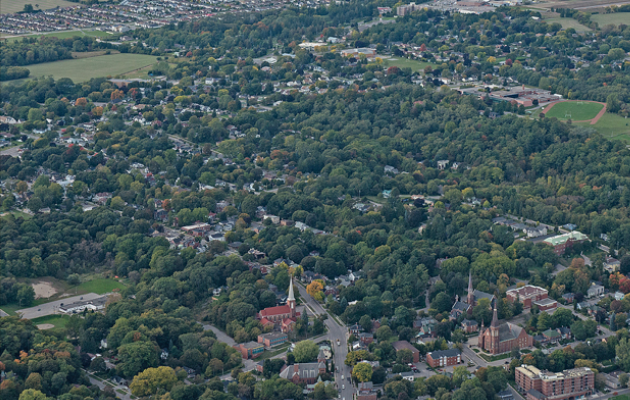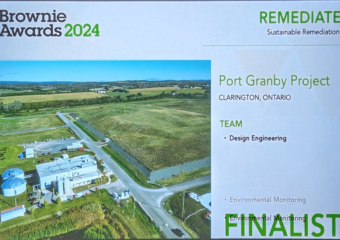As Canada’s largest environmental remediation project, the ultimate goal of the Port Hope Area Initiative (PHAI) is to clean up historic low-level radioactive waste while protecting the natural environment. Canadian Nuclear Laboratories (CNL) is committed to providing responsible environmental stewardship of the lands that we occupy while completing PHAI project work, and this commitment is a top consideration in every business decision.
With over one million tonnes of waste safely transported to the Port Hope Long-Term Waste Management Facility (LTWMF), representing almost half of all the contaminated soil that is being removed from various locations in Port Hope, the loss of trees has been a focus of both CNL and the local community. Feedback from Port Hope residents, in our most recent Public Attitude Survey, cite the loss of trees as their top environmental concern about the project.
CNL recognizes the vital need to balance the safe removal of historic waste from public and private properties, while also minimizing the removal of trees overall. To do this, CNL developed plans to mitigate the loss of trees in the municipality during the planning stage of the project. Now, as more information is available, CNL is taking additional steps to prevent a significant amount of tree removal from taking place at all.
Read on to find out exactly what CNL is doing to protect this precious natural resource.
As part of our environmental commitment, CNL consults with qualified arborists to consider methods of remediation around trees.
“We work closely with property owners to determine the feasibility of leaving trees in place – especially those identified by the home owner as having significance – while cleaning up the property,” says Steve Whillier, Director Small-Scale Sites remediation.
This sentiment is echoed by the CNL team that is conducting PHAI work on larger, public properties in the municipality. “Any tree removed will be replaced by CNL. We have inspected and confirmed the species and the number of trees on each of the major project sites in Port Hope,” added Harvey Seto, Director Major Sites Remediation.
With the protection of trees a priority, a two-fold plan is being followed as the PHAI projects are underway: saving as many trees as possible during the cleanup, and a commitment to mitigate the impact by replanting trees following PHAI work.
“Consistent with PHAI Environmental Assessment commitments, landscaping plans for restoration of the major sites have been developed with input from the local conservation authority and the Municipality of Port Hope,” adds Seto.
It is important to note, however, that as more PHAI work starts at various locations in the community, residents can anticipate a change to their viewscape, as trees are removed to facilitate the transfer of impacted material to long-term storage at the LTWMF.
“Upcoming work in the Strachan Street Ravine and in the Highland Drive area – the Pine Street Consolidated Site – will involve tree removal,” adds Seto.
The potential for loss of trees has also prompted CNL to look at additional options for how the PHAI project will be implemented. A number of residents have strongly indicated to CNL that they would like the choice to restrict the cleanup of historic low-level radioactive waste to certain areas of their properties. In particular, residents are asking for an option that will allow them to preserve specific features such as trees and gardens. While the opportunity for a property-owner directed cleanup is available, CNL is also exploring the possibility of an amendment to the PHAI Cleanup Criteria that will reduce the overall impact on trees in the municipality.
Discussions with Ontario Ministry of the Environment, Conservation and Parks and the Municipality of Port Hope on this topic are continuing, and any change to criteria will require acceptance from all parties and approval of the Canadian Nuclear Safety Commission (CNSC).
While the outcome of the process is uncertain, residents can be certain that the PHAI, as the community-requested solution to an environmental issue, is working to ensure that Port Hope retains its natural beauty and charm for the continued enjoyment of generations to come.
Residents and other members of the public are encouraged to contact CNL if they have questions or concerns and to visit PHAI.ca for up-to-date project information.



